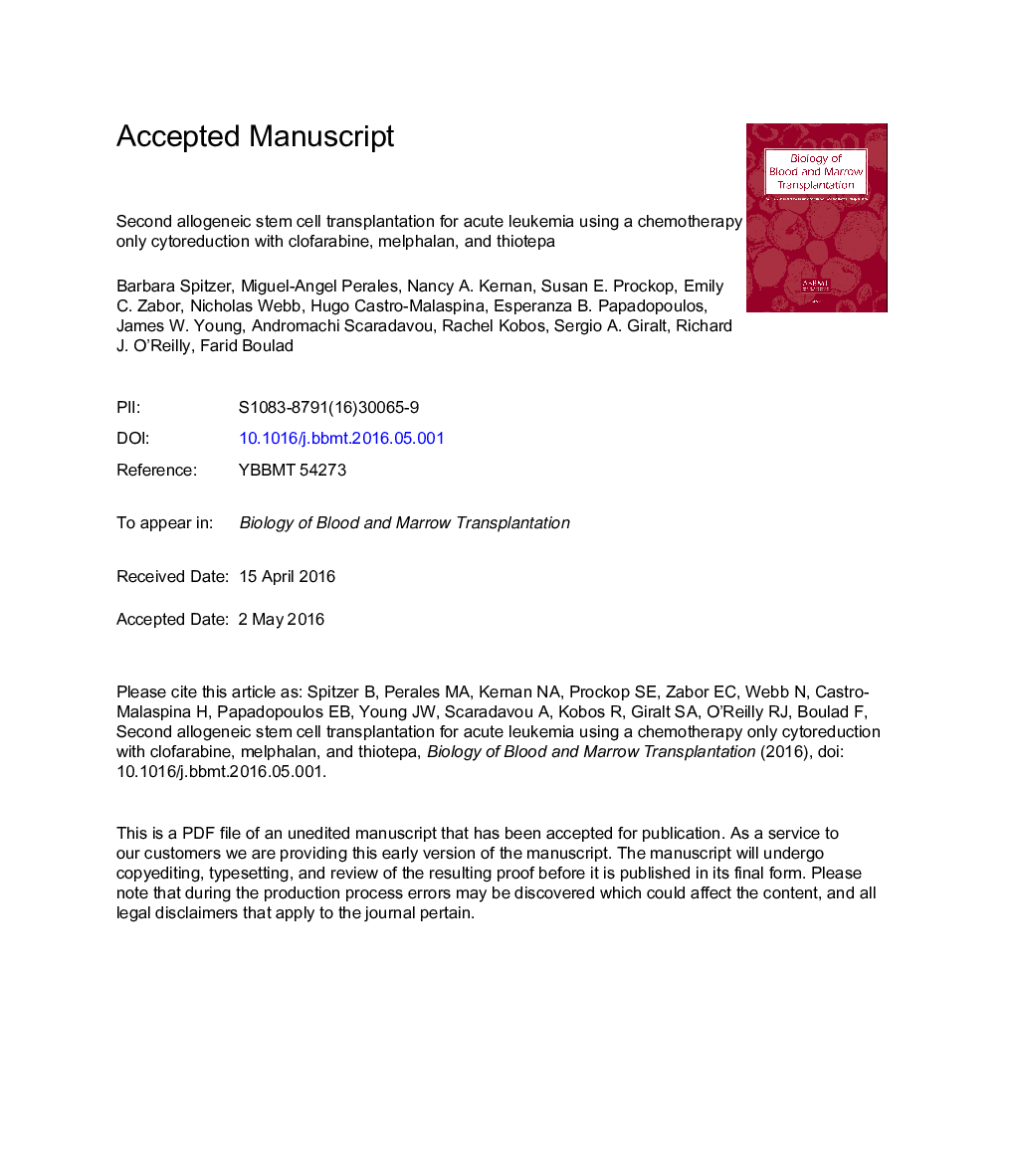| Article ID | Journal | Published Year | Pages | File Type |
|---|---|---|---|---|
| 8430843 | Biology of Blood and Marrow Transplantation | 2016 | 19 Pages |
Abstract
Relapse after allogeneic hematopoietic stem cell transplantation (alloHSCT) remains one of the leading causes of mortality in patients with leukemia. Treatment options in this population remain limited, with concern for both increased toxicity and further relapse. We treated 18 patients with acute leukemia for marrow ± extramedullary relapse after a previous alloHSCT with a myeloablative cytoreductive regimen including clofarabine, melphalan, and thiotepa followed by a second or third transplantation from the same or a different donor. All patients were in remission at the time of the second or third transplantation. All evaluable patients engrafted. The most common toxicity was reversible transaminitis associated with clofarabine. Two patients died from transplantation-related causes. Seven patients relapsed after their second or third transplanation and died of disease. Nine of 18 patients are alive and disease free, with a 3-year 49% probability of overall survival (OS). Patients whose remission duration after initial alloHSCT was >6 months achieved superior outcomes (3-year OS, 74%, 95% confidence interval, 53% to 100%), compared with those relapsing within 6 months (0%) (P < .001). This new cytoreductive regimen has yielded promising results with acceptable toxicity for second or third transplantations in patients with high-risk acute leukemia who relapsed after a prior transplantation, using various graft and donor options. This approach merits further evaluation in collaborative group studies.
Related Topics
Life Sciences
Biochemistry, Genetics and Molecular Biology
Cancer Research
Authors
Barbara Spitzer, Miguel-Angel Perales, Nancy A. Kernan, Susan E. Prockop, Emily C. Zabor, Nicholas Webb, Hugo Castro-Malaspina, Esperanza B. Papadopoulos, James W. Young, Andromachi Scaradavou, Rachel Kobos, Sergio A. Giralt, Richard J. O'Reilly,
